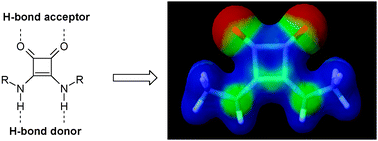Squaramides: physical properties, synthesis and applications
Abstract
Squaramides are remarkable four-membered ring systems derived from squaric acid that are able to form up to four

* Corresponding authors
a
Worldwide Medicinal Chemistry, Pfizer Global Research and Development, Ramsgate Road, Sandwich, Kent, UK
E-mail:
ian.storer@pfizer.com
Tel: +44 (0)1304 641854
b Chemical Biology Group, Pfizer Global Research and Development, Ramsgate Road, Sandwich, Kent, UK
Squaramides are remarkable four-membered ring systems derived from squaric acid that are able to form up to four

 Please wait while we load your content...
Something went wrong. Try again?
Please wait while we load your content...
Something went wrong. Try again?
R. Ian Storer, C. Aciro and L. H. Jones, Chem. Soc. Rev., 2011, 40, 2330 DOI: 10.1039/C0CS00200C
To request permission to reproduce material from this article, please go to the Copyright Clearance Center request page.
If you are an author contributing to an RSC publication, you do not need to request permission provided correct acknowledgement is given.
If you are the author of this article, you do not need to request permission to reproduce figures and diagrams provided correct acknowledgement is given. If you want to reproduce the whole article in a third-party publication (excluding your thesis/dissertation for which permission is not required) please go to the Copyright Clearance Center request page.
Read more about how to correctly acknowledge RSC content.
 Fetching data from CrossRef.
Fetching data from CrossRef.
This may take some time to load.
Loading related content
